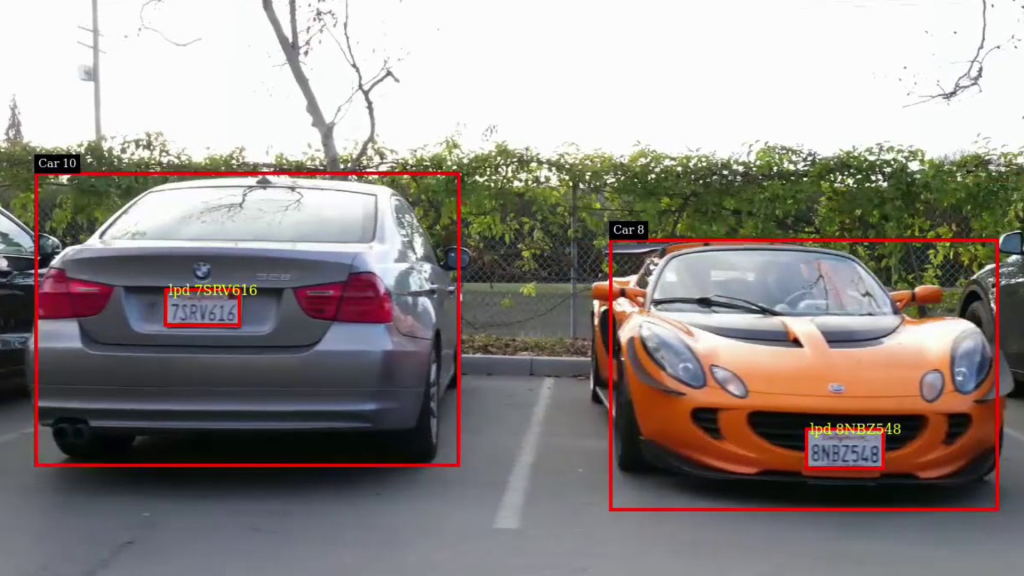Automatic License Plate Readers and Vehicle Tracking: Balancing Public Safety and Personal Privacy
In our modern digital age, the integration of technology into various facets of society has led to profound changes in how we perceive privacy, security, and surveillance. Automatic License Plate Readers (ALPR) cameras or ANPR cameras epitomize this technological shift, offering a powerful tool for law enforcement and other entities to monitor vehicular movements in real time. However, the widespread adoption of ALPR technology has raised complex questions about the delicate balance between public safety imperatives and individual privacy rights. In this comprehensive exploration, we will delve deeper into the workings of ALPR systems, analyze their multifaceted applications, assess their benefits and challenges, and propose nuanced strategies for navigating the intersection of public safety and personal privacy.
Table of Contents
Understanding Automatic License Plate Readers:
Automatic License Plate Readers (ALPRs) are sophisticated systems comprising cameras equipped with optical character recognition (OCR) software, capable of capturing and processing license plate images in real-time. These cameras are strategically positioned on vehicles, street poles, bridges, and other infrastructure, allowing for widespread surveillance of vehicular movements. Upon capturing an image, the OCR software extracts the alphanumeric characters from the license plate, which are then cross-referenced against databases containing information on stolen vehicles, wanted individuals, and other relevant criteria. The system triggers an alert when a match is found, enabling law enforcement officers to respond swiftly to potential threats or criminal activity.

Applications of ALPR Technology:
The versatility of ALPR technology extends far beyond traditional law enforcement applications. While its primary purpose remains focused on enhancing public safety, ALPRs are employed in a myriad of contexts, including:
Law Enforcement: ALPR cameras serve as invaluable tools for law enforcement agencies in identifying stolen vehicles, locating suspects, and apprehending individuals involved in criminal activities. By automating the process of license plate recognition and database querying, ALPRs enable law enforcement officers to conduct rapid and efficient investigations, thereby enhancing overall public safety.
Traffic Management: ALPR technology facilitates traffic monitoring and management by providing real-time data on vehicular movements, congestion patterns, and traffic violations. This information can be utilized to optimize traffic flow, improve road safety, and mitigate the impact of accidents or emergencies.
Toll Collection and Parking Enforcement: ALPR cameras streamline toll collection processes on highways and bridges by automatically capturing license plate information and debiting toll fees from motorists’ accounts. Similarly, in urban areas, ALPRs are employed for parking enforcement purposes, ensuring compliance with parking regulations and facilitating efficient allocation of parking spaces.
Private Sector Applications: Beyond the realm of law enforcement and public infrastructure, ALPR technology finds applications in the private sector, including access control for gated communities, parking garages, and corporate facilities. By integrating ALPR systems into their security protocols, private entities can enhance perimeter security and control access to restricted areas.

Benefits of ALPR Technology:
The widespread adoption of ALPR technology has yielded numerous benefits for public safety and operational efficiency, including:
Crime Prevention and Deterrence: The presence of ALPRs acts as a deterrent to criminal activity, dissuading individuals from engaging in unlawful behavior due to the risk of detection and apprehension. Moreover, the timely identification of stolen vehicles and suspects through ALPRs facilitates proactive law enforcement interventions, thereby preventing crimes before they occur.
Rapid Response to Emergencies: In emergencies such as AMBER Alerts or reports of missing persons, ALPRs play a pivotal role in facilitating rapid response efforts by providing real-time information on the location and movements of vehicles of interest. This capability can be instrumental in expediting search and rescue operations and ensuring the safety of vulnerable individuals.
Operational Efficiency: By automating the process of license plate recognition and database querying, ALPR technology enhances operational efficiency for law enforcement agencies and other organizations. Tasks that were once labor-intensive and time-consuming can now be performed swiftly and accurately, enabling personnel to focus their efforts on higher-priority activities.
Challenges and Concerns:
Despite their manifold benefits, ALPR camera systems are not without their challenges and concerns, particularly regarding privacy, security, and ethical considerations:
Privacy Implications: Perhaps the most pressing concern surrounding ALPR technology is its potential impact on individual privacy rights. The indiscriminate collection, storage, and analysis of license plate data raise significant privacy concerns, as it enables pervasive surveillance of individuals’ movements and activities without their explicit consent. Moreover, the long-term retention of ALPR data poses risks of unauthorized access, misuse, or exploitation for purposes unrelated to law enforcement.
Data Security Risks: The vast quantities of data generated by ALPR systems present formidable challenges in terms of data security and integrity. Unauthorized access to ALPR databases could result in data breaches, identity theft, or stalking, posing serious risks to individuals’ safety and privacy. Furthermore, the integration of ALPR technology with networked infrastructure introduces vulnerabilities that malicious actors could exploit to compromise system integrity or disrupt operations.
Lack of Regulation and Oversight: The rapid proliferation of ALPR technology has outpaced the development of comprehensive regulatory frameworks governing its deployment and use. As a result, there is a lack of standardized practices and oversight mechanisms to ensure accountability, transparency, and adherence to ethical principles. In the absence of clear guidelines, there is a risk of inconsistent or arbitrary implementation of ALPR systems, potentially exacerbating privacy concerns and undermining public trust.

Striking a Balance:
Balancing the imperatives of public safety with the protection of individual privacy rights requires a nuanced and multifaceted approach, encompassing legal, technological, and policy interventions. Some strategies for achieving this delicate balance include:
Transparency and Accountability: Law enforcement agencies and other entities deploying ALPR technology must adopt transparent practices and policies regarding its use, including data collection, retention, and sharing protocols. Public oversight mechanisms, such as independent audits and review boards, can help ensure accountability and foster trust between law enforcement and the communities they serve.
Data Minimization and Retention Limits: To mitigate privacy risks, ALPR data collection should be limited to the minimum necessary for law enforcement purposes, and retention periods should be strictly regulated. Non-relevant data should be promptly deleted or anonymized to prevent unauthorized access or misuse.
Encryption and Data Security Measures: Robust encryption protocols, access controls, and data security measures should be implemented to safeguard ALPR databases against unauthorized access, tampering, or exploitation. Regular security assessments and vulnerability testing can help identify and address potential weaknesses in ALPR systems and infrastructure.
Privacy-Enhancing Technologies: Leveraging privacy-enhancing technologies, such as differential privacy and homomorphic encryption, can enable the effective use of ALPR technology for public safety purposes while minimizing the risk to individual privacy rights. These technologies ensure that sensitive information remains protected and anonymized, thereby preserving the anonymity of individuals captured by ALPR systems.
Public Education and Engagement: Educating the public about the capabilities, limitations, and potential risks associated with ALPR technology is essential for fostering informed discourse and soliciting community input. Engaging with stakeholders, including civil liberties organizations, privacy advocates, and community members, can help identify concerns, address misconceptions, and develop inclusive policies that reflect diverse perspectives.
Conclusion:
Automatic License Plate Readers represent a powerful tool for enhancing public safety and operational efficiency in a variety of contexts. However, their widespread deployment raises complex ethical, legal, and social questions regarding privacy, security, and civil liberties. Striking a balance between the imperatives of public safety and the protection of individual privacy rights requires a collaborative and multi-dimensional approach, encompassing transparency, accountability, technological safeguards, and public engagement. By implementing robust privacy protections, promoting responsible use of ALPR technology, and fostering open dialogue with stakeholders, society can harness the benefits of ALPR systems while upholding fundamental principles of privacy, liberty, and justice for all.

